MusicRadar Verdict
Aesthetically, it might not be to everyone's taste, but the sounds are spectacular - and it will hold its value, too.
Pros
- +
Build. Detail. Pickups. Juicy, lively hum-meets-single-coil sounds.
Cons
- -
Large headstock logo. No non-bird inlay option. No classic 'bursts.
MusicRadar's got your back
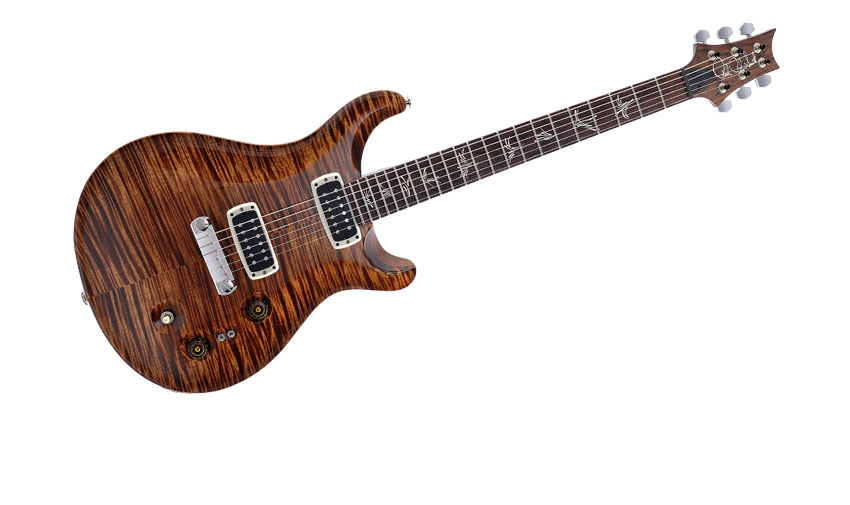
PRS Paul's Guitar review
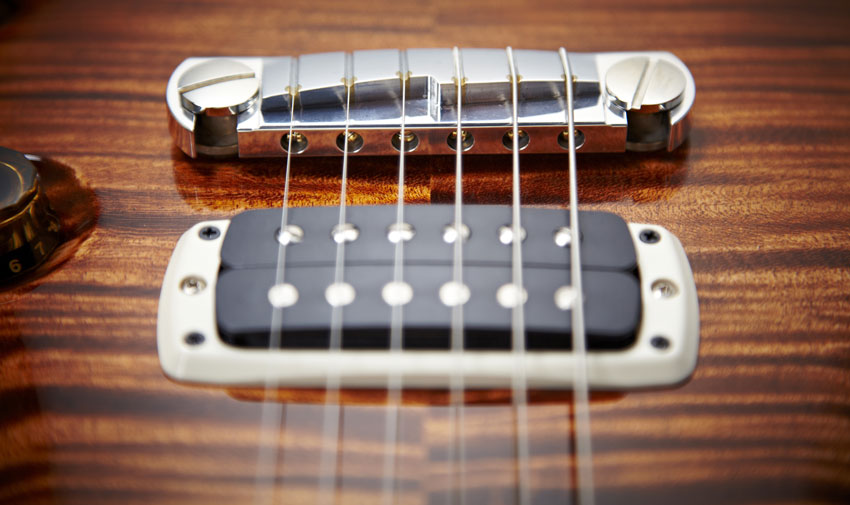
Bridge
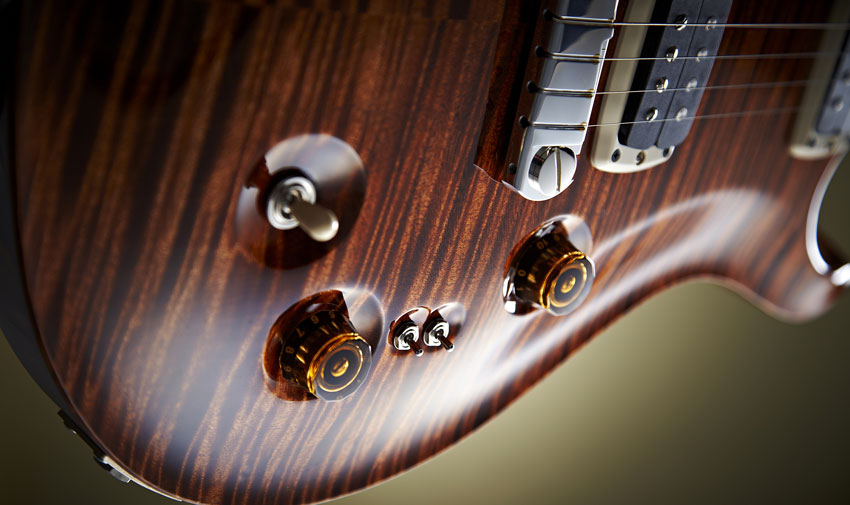
Controls
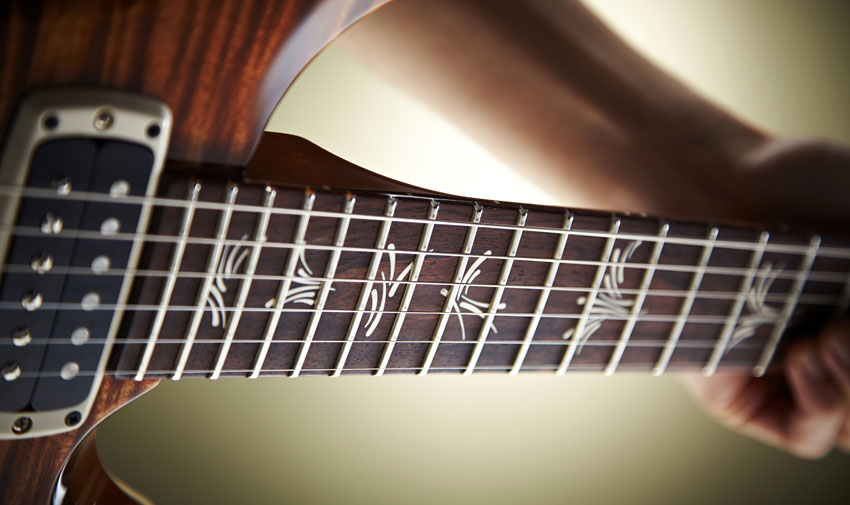
Neck
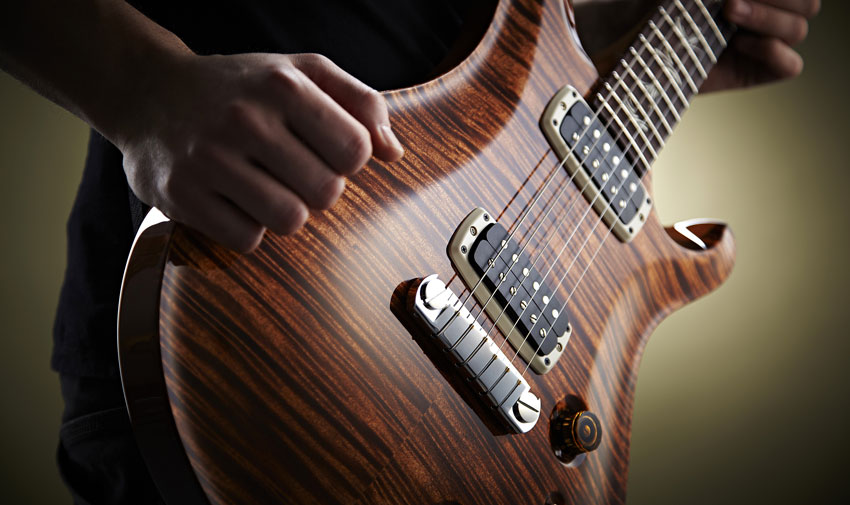
Body
PRS Paul's Guitar is essentially a production version of the guitar that the acclaimed luthier and brand name-sake himself uses. So how far has the firm come since our 1994 Custom 22 comparison model?
Back in 1994, Paul Reed Smith had been in the production guitar business for nearly nine years. He'd unveiled his first limited-edition Dragon I guitar in 1992, and the production version, the Custom 22, in 1993; both guitars introduced the shorter 22-fret neck and the intonated, wrap-over Stoptail bridge to the PRS guitar - features that would prove fundamental to the sound of the company's instruments.
Earlier this year, 19 years on, PRS released the oddly titled Paul's Guitar, based on the 408 Maple Top we looked at a few months back - a close replica production version of the Private Stock guitar Smith actually uses. Again, it's 22 frets with a Stoptail bridge. So, what's different here? Well, quite a bit, really…
Build
The majority of modern double-cut USA PRS guitars use a thicker 'McCarty'-depth body; here, the rim depth is greater than our comparison Custom 22 (this writer's own 1994 model); as is the mahogany back and the overall thickness. The maple cap's thickness, on the other hand, is virtually identical: 20.8mm (0.82 inches) on the Custom, 20mm (0.79 inches) on Paul's Guitar.
Wood specs are pretty usual: a one-piece mahogany back with a centred-joined figured maple cap classed as artist-grade 'dirty' maple - though it looks very clean and pristine to us, the stain process emphasising the figuring. As usual, there's no binding, and the stain goes over the edge. The neck is the relatively new pattern shape, a slight change to the previous wide-fat neck.
"The headstock has a Honduras rosewood facing and new open-backed Phase III top-locking tuners"
The headstock has a Honduras rosewood facing and aside from the new open-backed Phase III top-locking tuners, we have an enlarged inlaid 'Paul Reed Smith' logo plus, on the fingerboard, 'brushstroke' birds - yet another new variant of Smith's famous inlays.
Another change here is to the Stoptail bridge. It's machined aluminium, but there are six brass inserts that act as the strings' break point, and "make the low-mids come down a little bit and the high-mids come up a little bit", says Smith. "You get the sound of a brass bridge on an aluminium bridge," without the increased weight.
Want all the hottest music and gear news, reviews, deals, features and more, direct to your inbox? Sign up here.
We detailed the pickups and electronics of the 408 back in our previous review at the end of last year, but again, there are changes here. The 408 uses a three-way lever switch in the classic PRS tone control position; the tone control is in the PRS rotary or three-way toggle pickup selector switch position. Here, we go back to classic PRS: a three-way toggle replaces the three-way lever selector switch, and placed between the volume and tone are the two mini-switches that switch from single-coil to humbucking modes.
Finally, the neck pickup remains the same as the 408, but instead of the bigger bridge pickup, we have another 'Narrow 408' at the bridge (with a few more coil turns than he neck pickup). Both pickups appear in their nicely designed Blackberry-inspired mounting rings, along with a pair of third- generation 'lampshade' knobs.
Sounds
"Paul's Guitar dramatically illustrates the change, sonically, in PRS guitars"
Paul's Guitar dramatically illustrates the change, sonically, in PRS guitars. It even seems to have progressed from the 408. There is zero volume drop between the single/full- coil modes, and the resulting differences seem subtle, with just a little zing to the virtually hum-free single-coil mode, especially in the low-string response, and a roundness to the humbucking. These narrow 408 pickups certainly recall a mini-humbucker, but overall the guitar sounds less staid than the Custom: more alive.
In both pickup modes, there's a Fender-like percussive bounce, but where many Fenders can be a little ear-wearing in the high-end (especially on the bridge pickup), here, well, it's odd. It's like the high-end has been 'sweetened'. There's a slight feeling that the tone control has been knocked back a little or more, like a slightly cocked wah. It's such a lively guitar, though: beautifully resonant and ringing.
The stylistic breadth of the guitar leaves the Custom 22 in the shade. Earthly jazz tones, sweet Fender-y cleans, classic rock... just good sounds with balance. We thought the 408 was good, and we still might choose that for heavier tones from its bridge pickup, but with this combination, not to mention the more classic drive thanks to the control positions and the fast three-way toggle, we have a new favourite. At least in terms of sound...
Its price may top the £4k mark, but Paul's Guitar's street price is way more reasonable at £3,359 - it's doubtful you'll pay more. For followers of Mr Smith, and there are many, Paul's Guitar is a no-brainer. Sound-wise, its another step forwards, even from the recent 408 Maple Top.
Compared with our 1994 Custom 22, well, it's in a different league. The rub for those among us who love the more classic look of our featured Custom 22 is that we can't buy a guitar like it with these Paul's Guitar pickups and electronics. There are no classic 'bursts, no moon inlay options and, frankly, the oversized headstock logo is... Paul, we know it's your guitar!
Smith's virtually unique obsession with the smallest detail means the guitars sound better than they did 20 years ago. Do they look better to the more classically informed guitarist? That's up to you.
Dave Burrluck is one of the world’s most experienced guitar journalists, who started writing back in the '80s for International Musician and Recording World, co-founded The Guitar Magazine and has been the Gear Reviews Editor of Guitarist magazine for the past two decades. Along the way, Dave has been the sole author of The PRS Guitar Book and The Player's Guide to Guitar Maintenance as well as contributing to numerous other books on the electric guitar. Dave is an active gigging and recording musician and still finds time to make, repair and mod guitars, not least for Guitarist’s The Mod Squad.
